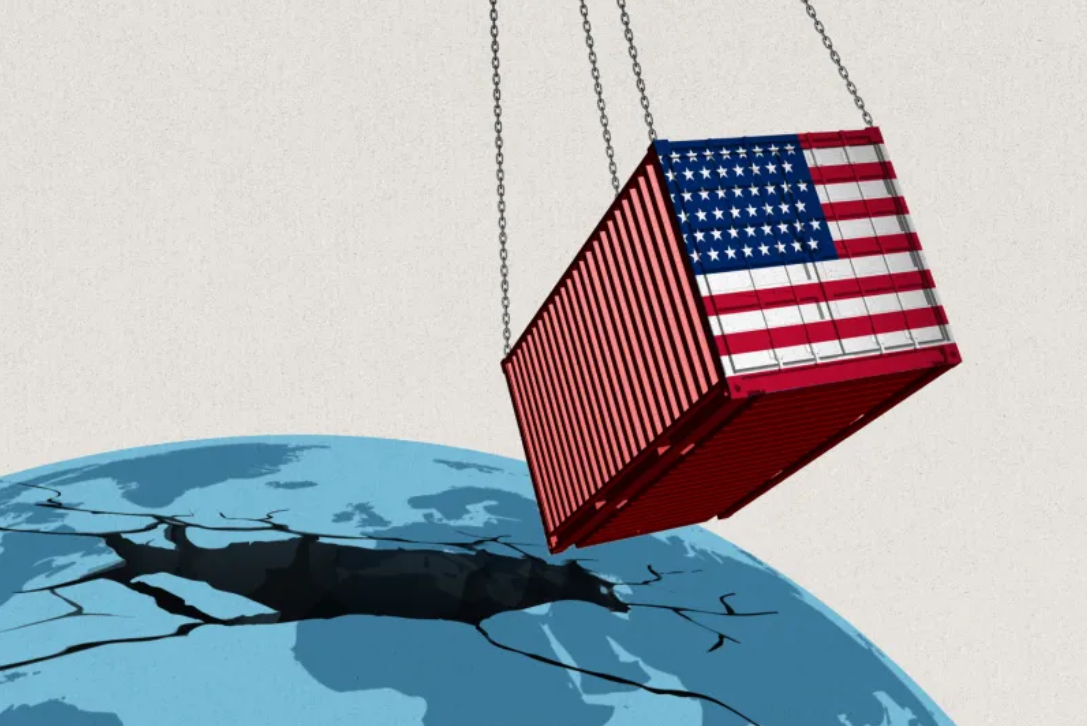Introduction: Trump’s New Trade War Blueprint
In a dramatic escalation of protectionist policy, Donald Trump, the 45th U.S. President and 2025 Republican front-runner, has announced the Trump Tariff Hike 2025, a sweeping new regime that could redefine global trade. Echoing his earlier “America First” agenda, Trump aims to impose a universal 10% import tariff and targeted rates up to 60% on Chinese goods, triggering global reactions and stoking fears of inflation and trade wars.
This move comes just months ahead of the 2025 U.S. Presidential Elections, positioning tariffs as a centerpiece of Trump’s economic revival strategy.

What Is Trump Proposing in the New Tariff Plan?
Here’s a breakdown of Trump’s 2025 revised tariff strategy:
Across-the-Board Import Tariff
Trump is calling for a 10% baseline tariff on all foreign imports into the U.S., regardless of country of origin or product type.
China in the Crosshairs: 60% Tariff Proposed
The plan also proposes a 60% tariff on Chinese goods, citing unfair trade practices, intellectual property theft, and geopolitical tensions.
Other Country-Specific Tariffs
Trump hinted at potential 30–35% tariffs on imports from Mexico, Vietnam, and India, especially in sectors like steel, electronics, and automobiles.
Proposed Tariffs by Country & Category
| Country | Proposed Tariff (%) | Targeted Categories | Previous Tariff Avg. (%) | Change (%) |
|---|---|---|---|---|
| China | 60% | Electronics, Steel, Textiles, Auto parts | 25% (avg) | +35% |
| Mexico | 35% | Vehicles, Agriculture, Raw Materials | 15% | +20% |
| Vietnam | 30% | Footwear, Apparel, Electronics | 10–15% | +15–20% |
| India | 30% | Pharmaceuticals, Textiles, Auto Components | 7–10% | +20% |
| European Union | 15% | Luxury Cars, Wine, Dairy Products | 5–7% | +8–10% |
| Global Average | 10% | All Imports | Varies | +10% (baseline) |
Trump’s Reasoning: “America First, Again”
Trump argues the revised tariff plan will:
- Revive American manufacturing
- Reduce reliance on China
- Protect American jobs
- Strengthen U.S. sovereignty
He stated, “The U.S. has been exploited for too long. We will now impose tariffs that level the playing field. We will manufacture here, not depend on enemies abroad.”
“It’s time we stop being ripped off. The globalists ruined American jobs. With these tariffs, we bring the jobs back. China, India, Mexico—they won’t get away anymore.”
Detailed Breakdown of Key Country Targets
China – 60% Tariff
- Justification: IP theft, espionage, trade imbalance, TikTok/data security concerns
- Impact: Likely to trigger full-scale retaliation, affecting U.S. soybeans, tech exports, and even rare earth supply.
Mexico – 35% Tariff
- Reason: Migration crisis, drug smuggling, auto imports
- Impact: Could hurt U.S. carmakers dependent on cross-border supply chains (Ford, GM, Tesla).
Vietnam – 30% Tariff
- Target: Apparel, electronics
- Impact: Major blow to tech brands outsourcing assembly to Vietnam post-China tensions.
India – 30% Tariff
- Target: Generics, clothing, vehicle parts
- Impact: Pressure on pharma supply, potential retaliation on U.S. services like IT, education visas.
Europe – 15% Tariff
- Justification: Wine, cheese, cars are seen as “luxury dumping”
- Impact: EU may respond via WTO litigation or counter tariffs on Boeing, agriculture.
Critics Fire Back: Economic Fallout Feared
While the Trump campaign touts the policy as a patriotic economic revival, economists and trade analysts warn of serious repercussions:
Higher Consumer Prices
Tariffs typically raise the cost of goods, especially electronics, automobiles, clothing, and even food. Critics claim this could increase inflation again, especially after years of recovery post-pandemic.
Global Trade Retaliation
Countries like China have already signaled retaliatory measures, which could escalate into another trade war similar to the 2018–2020 tensions.
Job Losses in Retail & Agriculture
Higher tariffs may hurt U.S. exporters, farmers, and industries that rely on international supply chains, leading to layoffs.
Impact on Key Sectors
| Sector | Potential Impact |
|---|---|
| Tech | Costlier gadgets, phones, chips |
| Automobile | Surge in vehicle prices (parts mostly imported) |
| Agriculture | Export challenges due to retaliation |
| Retail | Cost-push inflation for clothes, electronics, furniture |
Political Fallout: Will It Help or Hurt Trump?
Trump’s tariff message resonates with his base in the Rust Belt, especially in Ohio, Pennsylvania, and Michigan. However, suburban voters, economists, and even some Republicans have voiced concern over the economic risks.
Joe Biden’s administration has not fully lifted Trump-era tariffs but has gradually eased tensions with trade partners. The 2025 election could now become a referendum on protectionism vs. globalization.
Business Reactions
Major U.S. corporations like Apple, Ford, and Walmart have expressed concern, stating they will be forced to pass additional costs to consumers or restructure supply chains, which could lead to:
- Product shortages
- Delayed rollouts
- Manufacturing slowdowns
Global Reactions: China, EU, Mexico Respond
- China: Warned of “resolute countermeasures,” possibly targeting American agricultural exports.
- EU: Called for WTO review if tariffs are implemented without negotiation.
- Mexico: Threatened reciprocal tariffs on agriculture and auto parts.
Expert Commentary
“Trump’s plan is bold and politically effective, but economically risky,” says Dr. Helena Cruz, a trade policy expert from Harvard.
“Consumers will feel the pain immediately. It’s 2018 again—but this time, more intense,” adds economist Raj Mehta.
Conclusion: A Trade Gamble That Could Shape the 2025 Election
Trump’s revised tariff proposal is a bold and risky political move, reviving the populist trade nationalism that defined his first term. Whether it becomes a cornerstone of American economic resurgence or leads to global retaliation and inflation remains to be seen.
But one thing is clear — Trump’s “Tariff Comeback” is likely to dominate both domestic politics and global headlines throughout the 2025 campaign trail.
For the latest updates on U.S. trade, Trump’s policies, and 2025 election news, stay tuned to Vishwakhabar.com!
Bookmark us for real-time alerts and exclusive insights.
Follow Us: